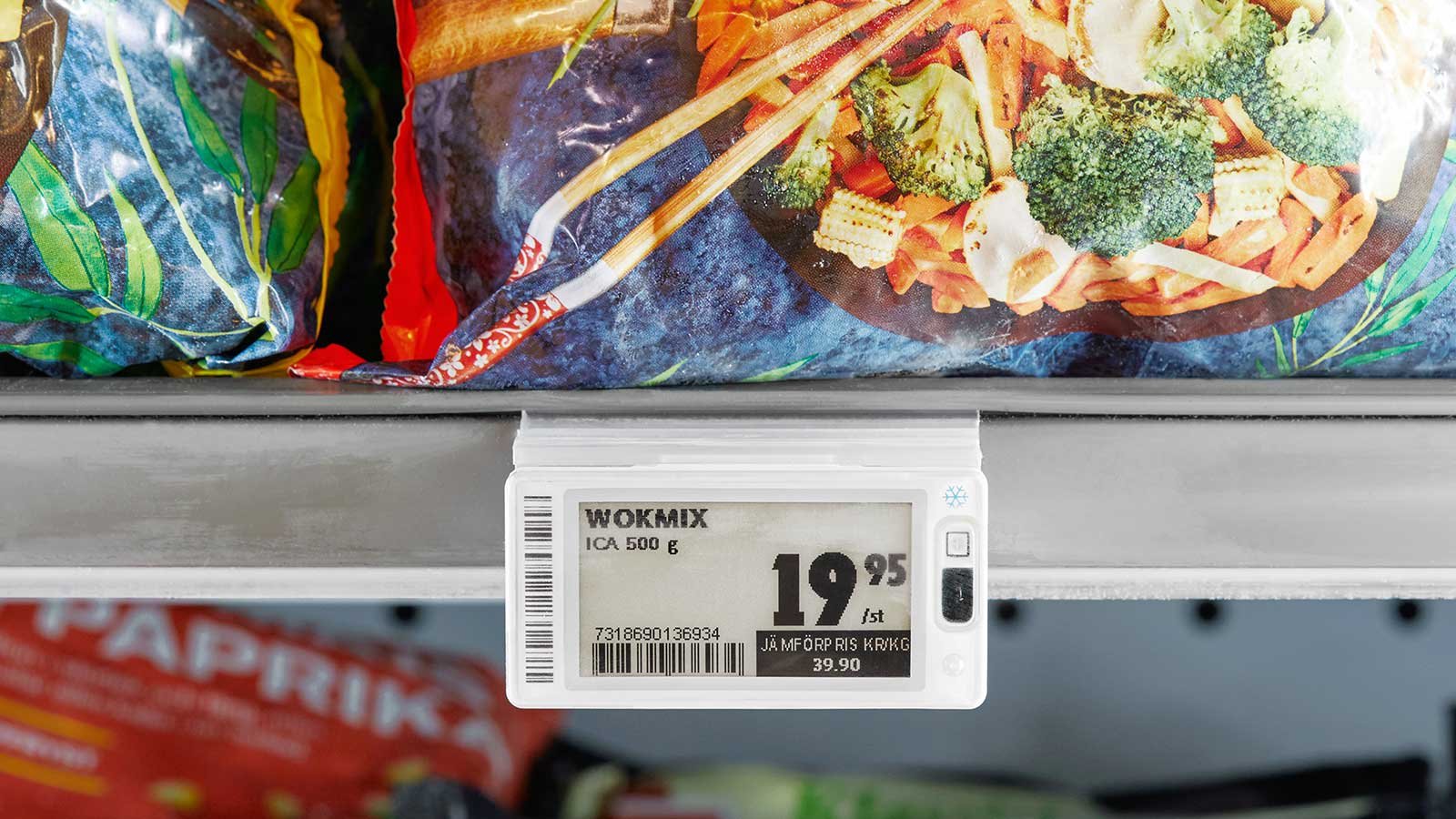
Price Integrity
The wrong price can be costly. Our electronic shelf labels allow you to sleep well at night, safe in the knowledge that you’re always showing the right price at the right time.
Situation with paper
Errors are quite frequent in a store with paper price tags – typically in the range of 5-10%, sometimes more. There are many reasons for a price error on the shelf. For example, tags can be missing, misplaced or not updated to the most recent price.
Many stores change hundreds or thousands of price tags every week, which is a time-consuming, error-prone and frankly boring task. When a larger batch of changes comes through, it can take many hours, sometimes days, before all prices are changed. Until that is done, there is a mismatch between the shelf price and the POS. If the price is too low on the shelf, the shopper can get angry when paying, and it also takes additional time for staff to handle the mistake. If the price is too high on the shelf, it might lead to lower sales than planned, resulting in a build-up of excess inventory.
Both too high or too low are made even worse if the product is on promotion and advertised in leaflets, web, print, etc. Shoppers will be even more annoyed at being charged too much, and retailers will be unhappy with the overstock if the price is too high on the shelf.
Another reason for incorrect prices is “shelf crawl” where price tags are moved, typically to reduce or increase the space allocated for the associated product. This can be done to cover up stock-outs or from external suppliers that want to give more space to their own products atthe expense of the competitor. “Shelf crawl” damages the planogram, which can lead to stock-outs, overstock, and lower revenue and profit.
Situation with paper
Errors are quite frequent in a store with paper price tags – typically in the range of 5-10%, sometimes more. There are many reasons for a price error on the shelf. For example, tags can be missing, misplaced or not updated to the most recent price.
Many stores change hundreds or thousands of price tags every week, which is a time-consuming, error-prone and frankly boring task. When a larger batch of changes comes through, it can take many hours, sometimes days, before all prices are changed. Until that is done, there is a mismatch between the shelf price and the POS. If the price is too low on the shelf, the shopper can get angry when paying, and it also takes additional time for staff to handle the mistake. If the price is too high on the shelf, it might lead to lower sales than planned, resulting in a build-up of excess inventory.
Both too high or too low are made even worse if the product is on promotion and advertised in leaflets, web, print, etc. Shoppers will be even more annoyed at being charged too much, and retailers will be unhappy with the overstock if the price is too high on the shelf.
Another reason for incorrect prices is “shelf crawl” where price tags are moved, typically to reduce or increase the space allocated for the associated product. This can be done to cover up stock-outs or from external suppliers that want to give more space to their own products at the expense of the competitor. “Shelf crawl” damages the planogram, which can lead to stock-outs, overstock, and lower revenue and profit.
The Pricer solution
In a Pricer store, the prices are updated digitally and automatically, ensuring that the price displayed on the shelf is always the same as the price at the POS.
The result is happy customers and no loss of sales or stock issues due to wrong pricing. Shelf crawl is reduced dramatically since labels are securely mounted at the shelf and require a dedicated tool to be moved.
